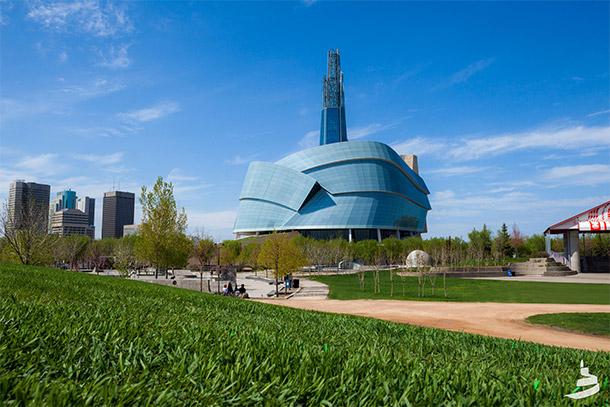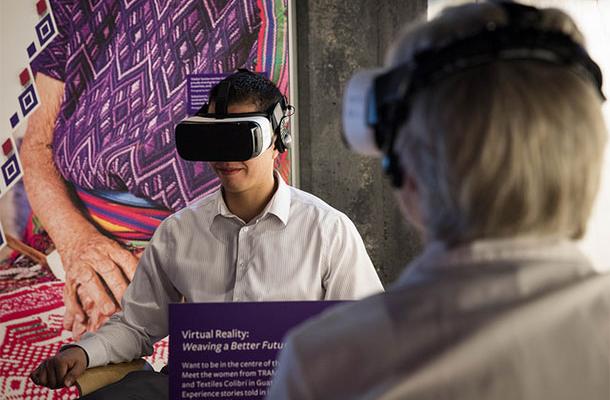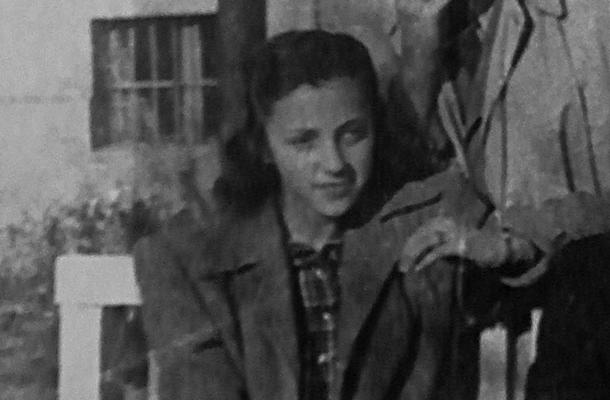Architecture

A meaningful setting
It's a first – The Canadian Museum for Human Rights is the first national museum ever built outside Canada’s National Capital Region. This striking new landmark is situated in Manitoba, near the longitudinal (east-west) centre of Canada and the heart of the continent.
A significant location – The Museum stands at The Forks, the place where the Red and Assiniboine Rivers meet in Winnipeg. Indigenous peoples have always been, and continue to be, connected to these ancestral lands. For thousands of years, travellers, traders, workers, immigrants and activists have been meeting at The Forks. It is now a National Historic Site and one of Winnipeg’s premier tourist destinations.
Surrounded by history – The Museum is adjacent to the Esplanade Riel, a pedestrian bridge that symbolically unites Winnipeg’s French and English communities. It is near historic places such as Union Station, Upper Fort Garry, the grave of Métis leader Louis Riel and the Exchange District. As a city, Winnipeg has given rise to important national human rights struggles, including the Red River Resistance (1869-1870) and the Winnipeg General Strike (1919).
From vision to completion
The dream – In 2000, Winnipeg-based business leader and philanthropist Israel Asper began to imagine a world-class human rights centre for Canada. In April 2003, he and supporters announced plans to erect the Museum at The Forks. Six months later, Asper died. His family and the Friends of the Canadian Museum for Human Rights carried on his mission to establish an iconic place where human rights education and discussion could take place.
The architect – In 2003, the Friends of the Canadian Museum for Human Rights launched one of Canada’s largest-ever juried architectural competitions. Entries came from 63 firms in 21 countries. Distinguished architect Antoine Predock won the competition.
The partners – Starting in 2008, government, corporate, labour and individual donors came together to support the building of a one-of-a-kind museum. The governments of Canada, Manitoba and Winnipeg joined with The Forks Renewal Corporation and the Friends of the Canadian Museum for Human Rights to begin the $351-million project.
The legislation – On March 13, 2008, the Government of Canada passed Bill C-42 into law. The bill changed the Museums Act to include the first new national museum in more than 40 years.
The consultation – In 2009-2010, the Museum went to Canadians to ask for their input. People said they wanted the Museum to talk about human rights victories in Canada and the world, today’s debates about human rights, and events that showed Canada’s commitment to human rights, as well as its failures.
The land – The site of the Museum is ancestral land. Indigenous ancestors followed the waterways here for peace-making, dialogue and trade. Before Museum construction began, archeologists, in consultation with respected elders, conducted an extensive dig and recovered more than 400,000 revealing artifacts.
The construction – On December 19, 2008, a ground-breaking ceremony was held at The Forks. Construction began in April 2009. In September 2012, the last of 1,669 custom-cut pieces of glass was installed. Work on the base building was completed a few months later.
The exhibit designers – In 2008, one of the world’s foremost museum design firms, Ralph Appelbaum Associates, was engaged to work with the Museum’s research team to create a cutting-edge experience for visitors. This firm’s previous projects include the National Civil Rights Museum in Tennessee and the United States Holocaust Memorial Museum in Washington D.C.
The Royal blessing – On July 3, 2010, the Museum cornerstone was unveiled by Her Majesty Queen Elizabeth II. She had personally selected a stone from Runnymede, the English meadow where the Magna Carta, a landmark human rights charter, was sealed in 1215. This stone, inscribed with a message from the Queen, is encased in Manitoba Tyndall stone.
Opening the doors – The Museum opened on September 20, 2014.
The visitor’s journey
Architecture as human quest
Ideas – This visionary building is a unifying symbol of concepts such as inclusion, freedom, equality and dignity – ideas that have inspired Canadians to strive for human rights.
Inspiration – Inspired by Canada’s majestic natural domain – grasslands, deeply rooted trees, towering mountains, northern lights, snow, icebergs, water and sky – Antoine Predock’s masterful design is evocative of numerous natural elements. Predock has described the building as “carved into the earth and dissolving into the sky.”
Image – The visitor’s experiential journey is an upward one, progressing from ground to sky, darkness to light – a metaphor for the struggle toward fully realized human rights for all.
Toward human rights
The Roots – The Museum is grounded by four massive stone Roots, symbolizing humanity’s connection to the earth. Prairie grasses grow atop three of the Roots. The space inside contains classrooms, temporary exhibit space, a future theatre and the Museum’s boutique, ERA Bistro and the Ticketing and Information desk. Your visit begins at an entrance between the Roots.
Bonnie & John Buhler Hall – The first part of your journey is a descent into a great meeting hall, carved into the earth itself. This welcoming space hosts a wide variety of Museum events. It is also available as an adaptable rental venue. It is both intimate and grand, intended to evoke memories of ancient gatherings, resonant with human community and kinship.
The Alabaster Ramps – As you make your ascent through the Museum, on foot or by wheelchair (elevators are also available), your route between galleries is a stunning series of ramps clad in pale alabaster. This material is lit from within, creating a glowing pathway. Along the way, vantage points allow for breathtaking views of the deep “canyon” of ramps, which crisscross in an irregular pattern, rising eight storeys.
The Mountain – This monumental part of the building, clad in limestone from the Tyndall area of Manitoba, contains the Museum’s 11galleries of varying sizes. Their high ceilings lend a sense of hope as you pass through thousands of square metres of inspiring exhibits.
The Cloud – Great sheets of glass create an enormous Cloud around the building’s southwest face, symbolizing the wrapped wings of a dove. Natural light floods into the upper levels, housing the Museum staff offices.
Stuart Clark Garden of Contemplation – In this place for peaceful reflection, water runs over volcanic stone amid the greenery. From here you can glimpse Museum staff at work – part of the architect’s vision of transparency, and a reminder of ongoing human effort in support of rights.
Israel Asper Tower of Hope – Finally, by climbing a spiral staircase or via elevator, you’ll arrive at an enclosed viewing platform, partway up the glass spire that rises to a height of 100 metres (328 feet). Look out at the panoramic view of the surrounding city. When the tower is illuminated, it becomes a beacon of enlightenment, the goal of the human rights journey.





